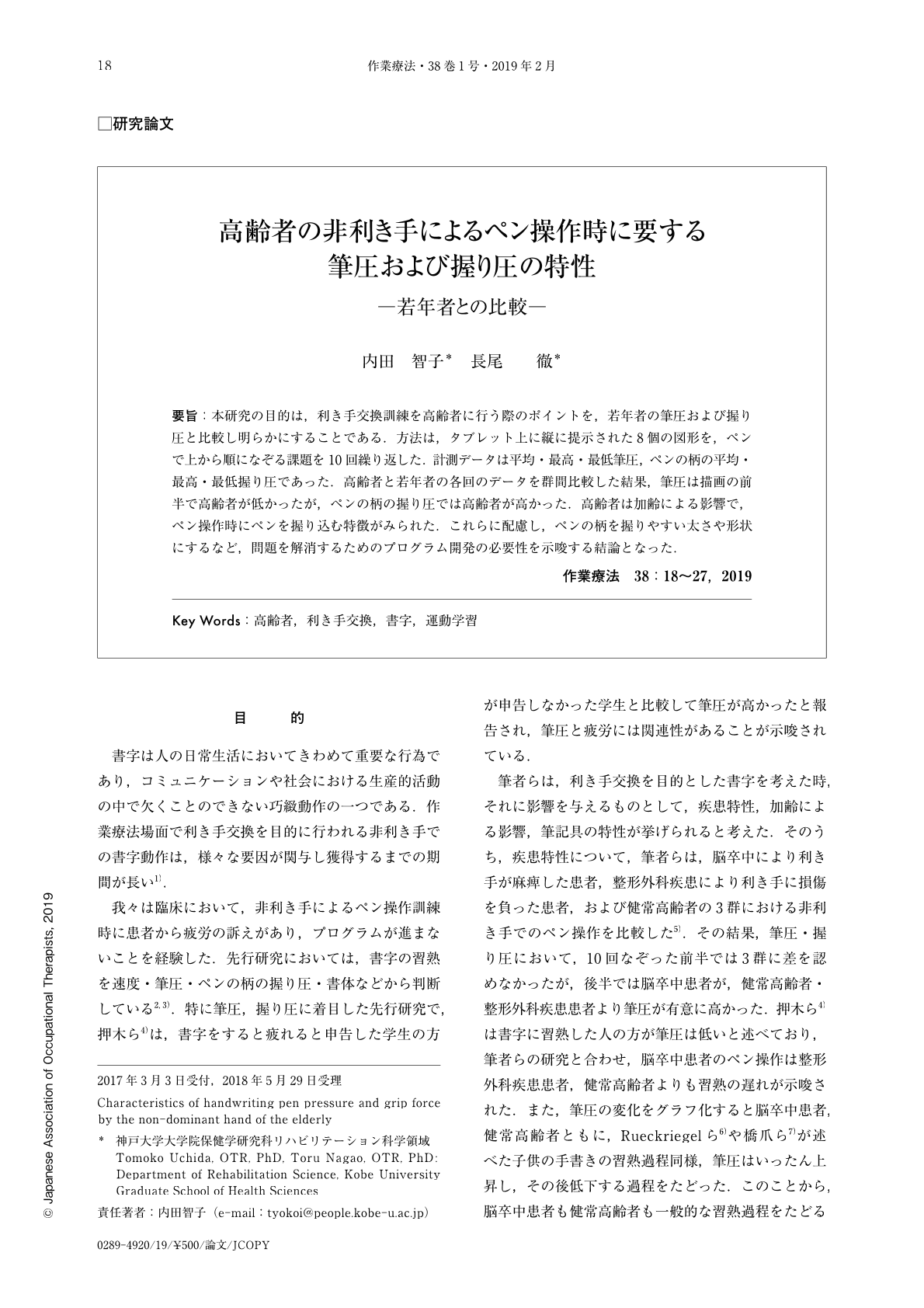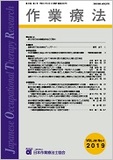Japanese
English
- 販売していません
- Abstract 文献概要
- 1ページ目 Look Inside
- 参考文献 Reference
- サイト内被引用 Cited by
要旨:本研究の目的は,利き手交換訓練を高齢者に行う際のポイントを,若年者の筆圧および握り圧と比較し明らかにすることである.方法は,タブレット上に縦に提示された8個の図形を,ペンで上から順になぞる課題を10回繰り返した.計測データは平均・最高・最低筆圧,ペンの柄の平均・最高・最低握り圧であった.高齢者と若年者の各回のデータを群間比較した結果,筆圧は描画の前半で高齢者が低かったが,ペンの柄の握り圧では高齢者が高かった.高齢者は加齢による影響で,ペン操作時にペンを握り込む特徴がみられた.これらに配慮し,ペンの柄を握りやすい太さや形状にするなど,問題を解消するためのプログラム開発の必要性を示唆する結論となった.
The purpose of this study was to capture the features of writing skill in the non-dominant hand of the elderly, and to help the switching hand dominance training of stroke-related hemiplegic patients. Thirty-eight elderly (age:74.2 ± 5.5) and 15 youths (age:20.5 ± 0.9) participated in the study. Their task was to trace over the outline of 8 types of symbols presented over a tablet screen. The successive tracings of the 8 types of symbols were counted as 1 session, which was consecutively repeated 10 times. Acquired data were pen pressure during performance (pen pressure), and the force exerted by the fingers against the pen during writing (grip force). Results indicate no significant within-group differences in either group. Regarding comparisons between the groups, pen pressure was lower in the elderly than the youth in the first half of the drawing analysis, but the grip force was higher in elderly than in the youth group. Therefore, as motor and sensory function decline during aging, leading to a tendency among the elderly to grip the pen more forcefully, occupational therapists need to consider appropriate interventions.

Copyright © 2019, Japanese Association of Occupational Therapists. All rights reserved.


